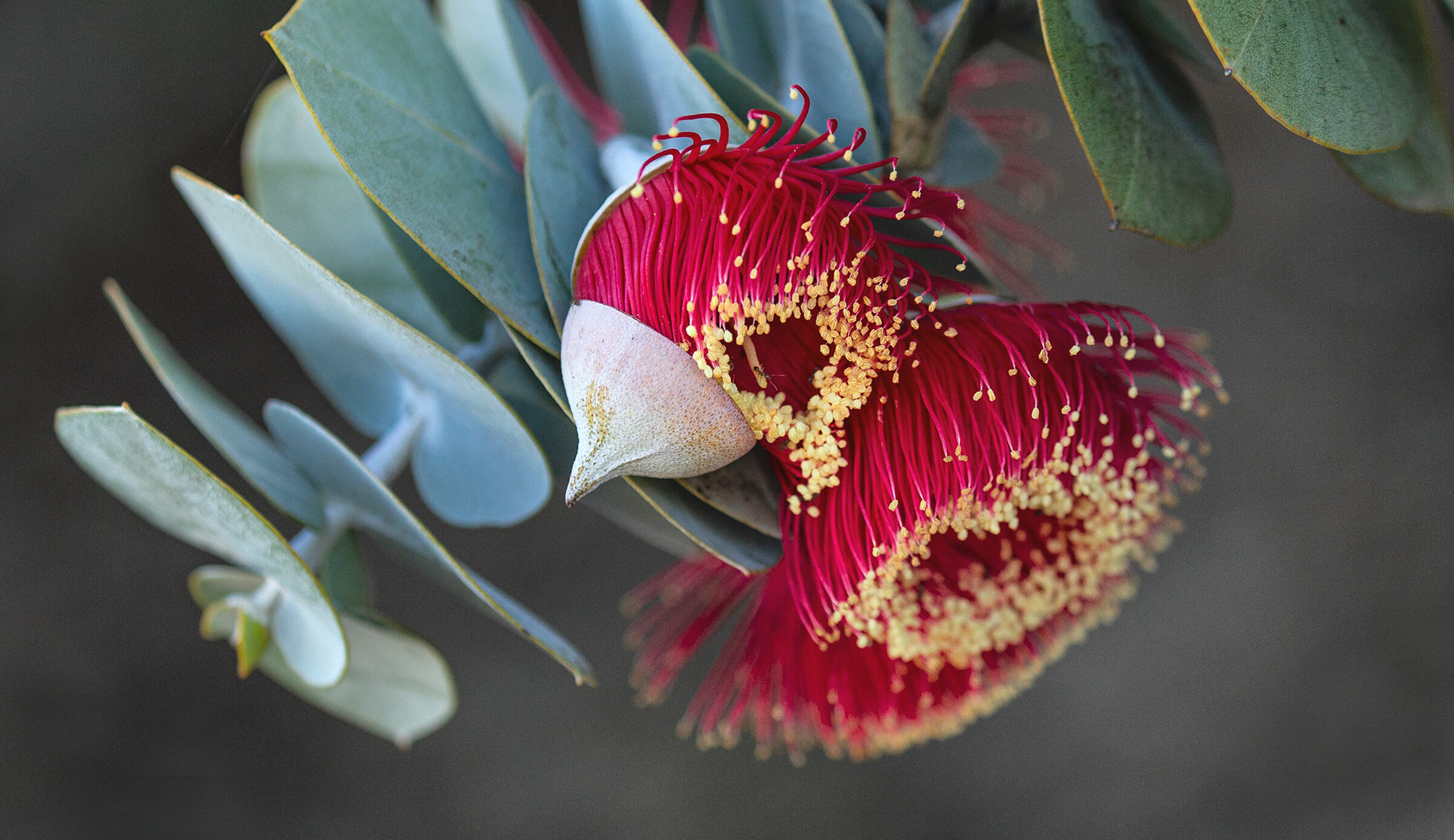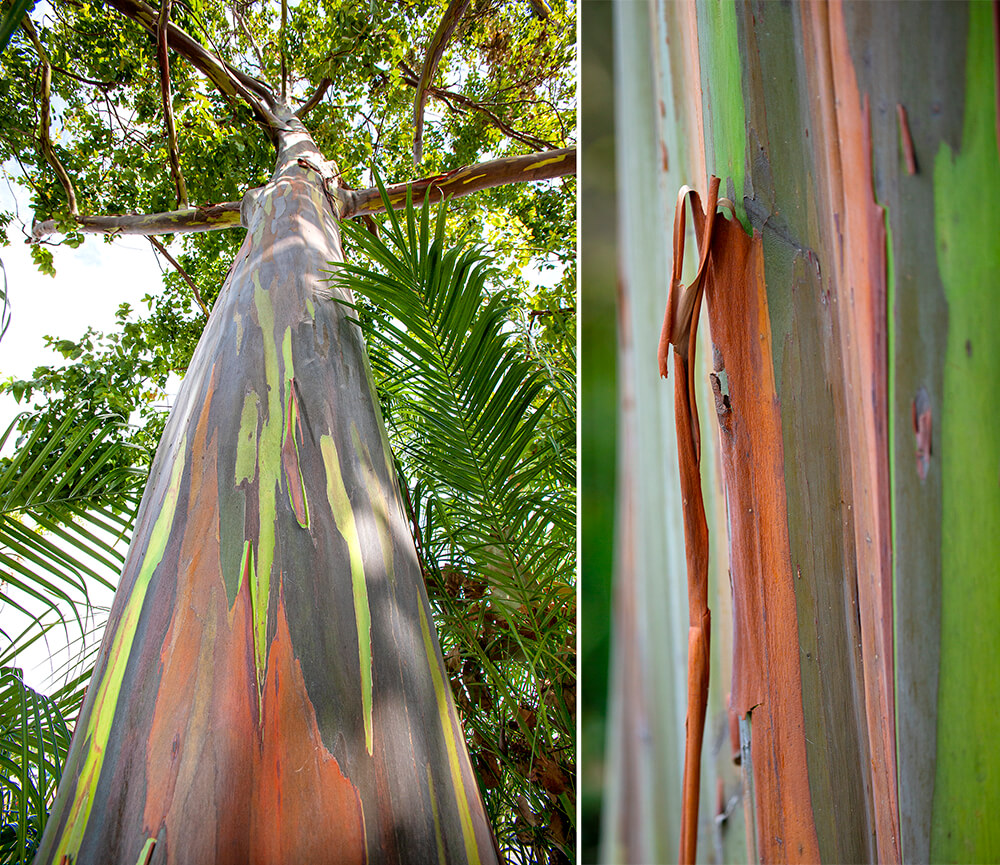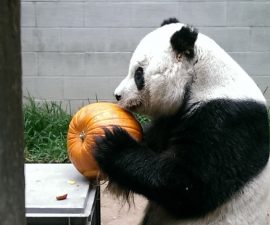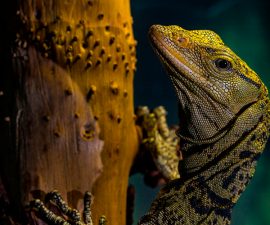BY Donna Parham
Photography by Tammy Spratt
Picture yourself in the midst of an Australian forest, breathing in the soothing, lightly menthol, slightly camphoric fragrance of the leaves fluttering overhead and crunching underfoot. The sight—and distinctive scent—of the eucalypt (gum) tree is an icon of the Australian bush. But you’re just as likely to enjoy the shade of a gum tree in urban or suburban areas, where they’re popular landscape trees. And you don’t have to go to Australia to see them. Various species have become established all over the world, maybe even in your neighborhood.
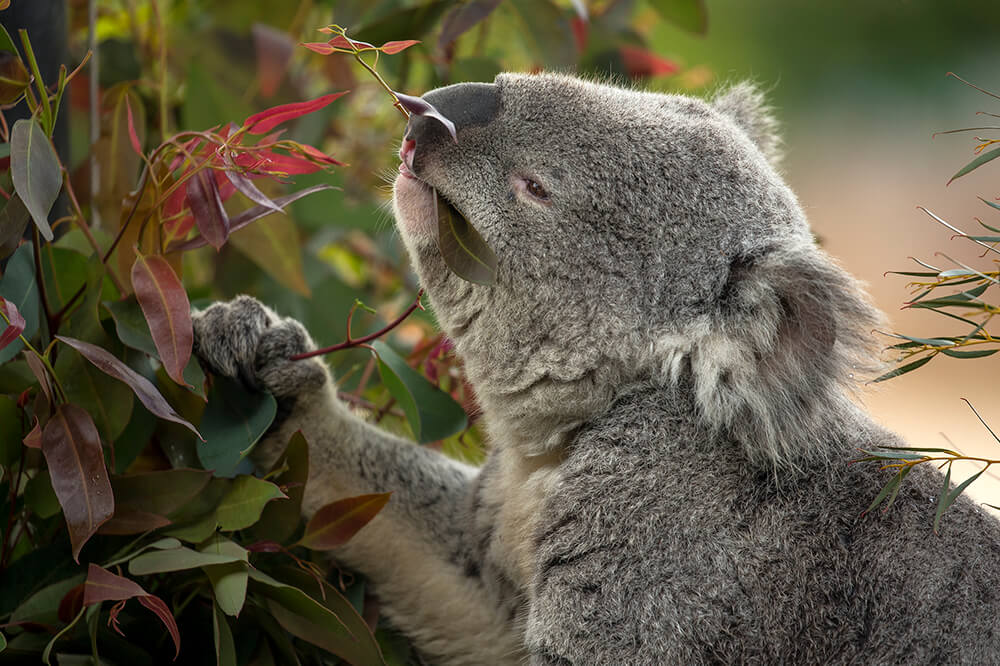
FOOD AND SHELTER
Eucalypts are food and shelter for many species of Australian animals, including koalas, possums, insects, bats, and birds.
The eucalypts, members of the Myrtle family, include about 900 species in three similar genera: Eucalyptus, Corymbia, and Angophora. Most are native to Australia, while a handful of species are native to New Guinea and nearby islands in Indonesia. As a group, they occur naturally as far south as Tasmania and as far north as the island of Mindanao in the Philippines. Some exude a sticky, gum-like substance from the trunk, which is why Australians often refer to most of them as “gum trees.” Gum trees are shelter for many species of native animals, including koalas (which also eat the leaves), possums, and birds.
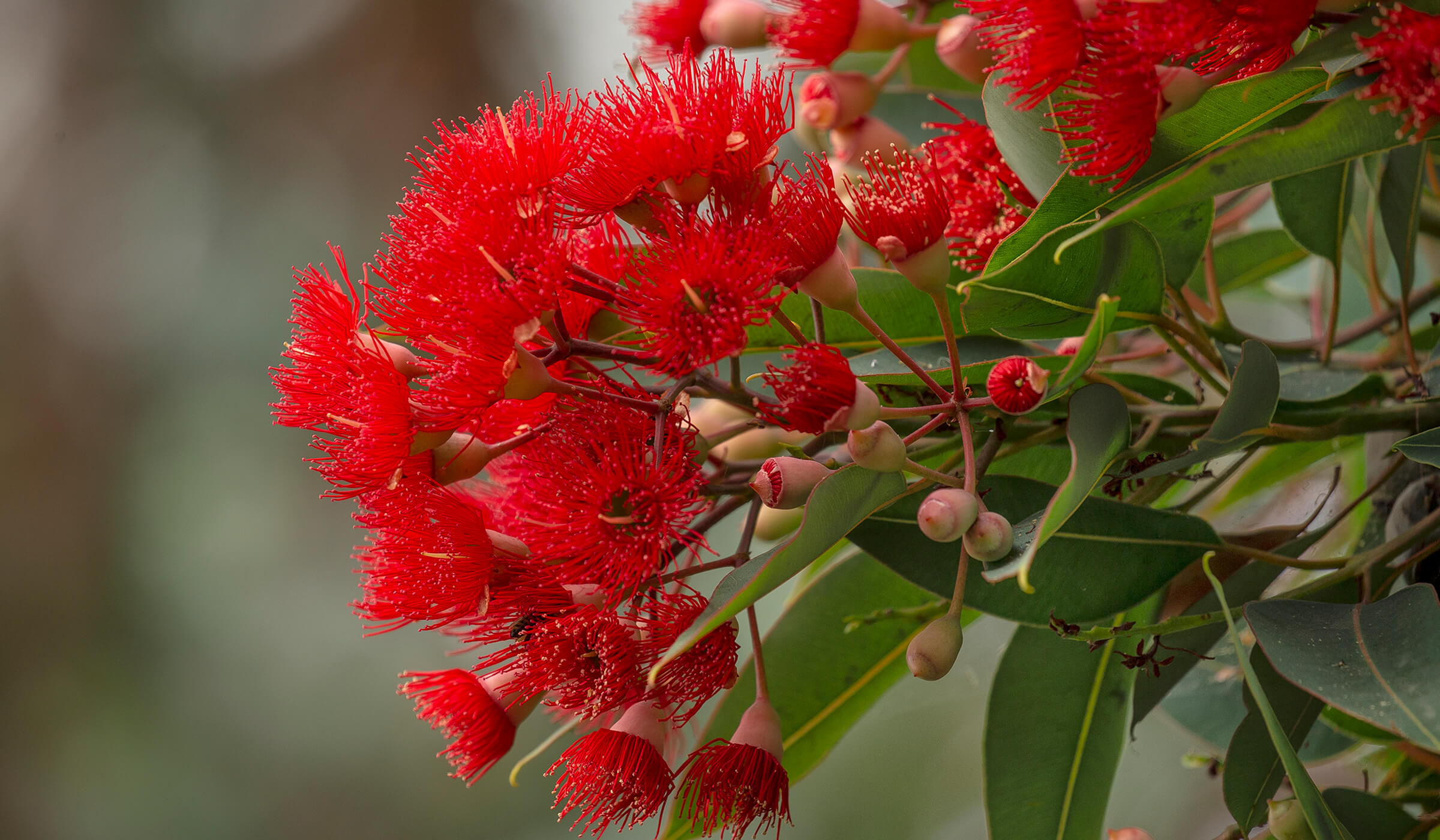
USEFUL TREES
Aboriginal peoples of Australia used gum trees for a variety of purposes, including medicines, tools, canoes, musical instruments, firewood, and timber for building. When European settlers arrived, they used gums, too—for timber and firewood. Today, “eucs” are among the most common of the tropical forest hardwoods. Eucalypt timber is used in construction, furniture, wood chips, and paper. Jarrah wood E. marginata is especially highly regarded for its durability, strength, and resistance to pests, and the rose gum E. grandis and blue gum E. globulus are two of the most widely planted timber and fiber trees.
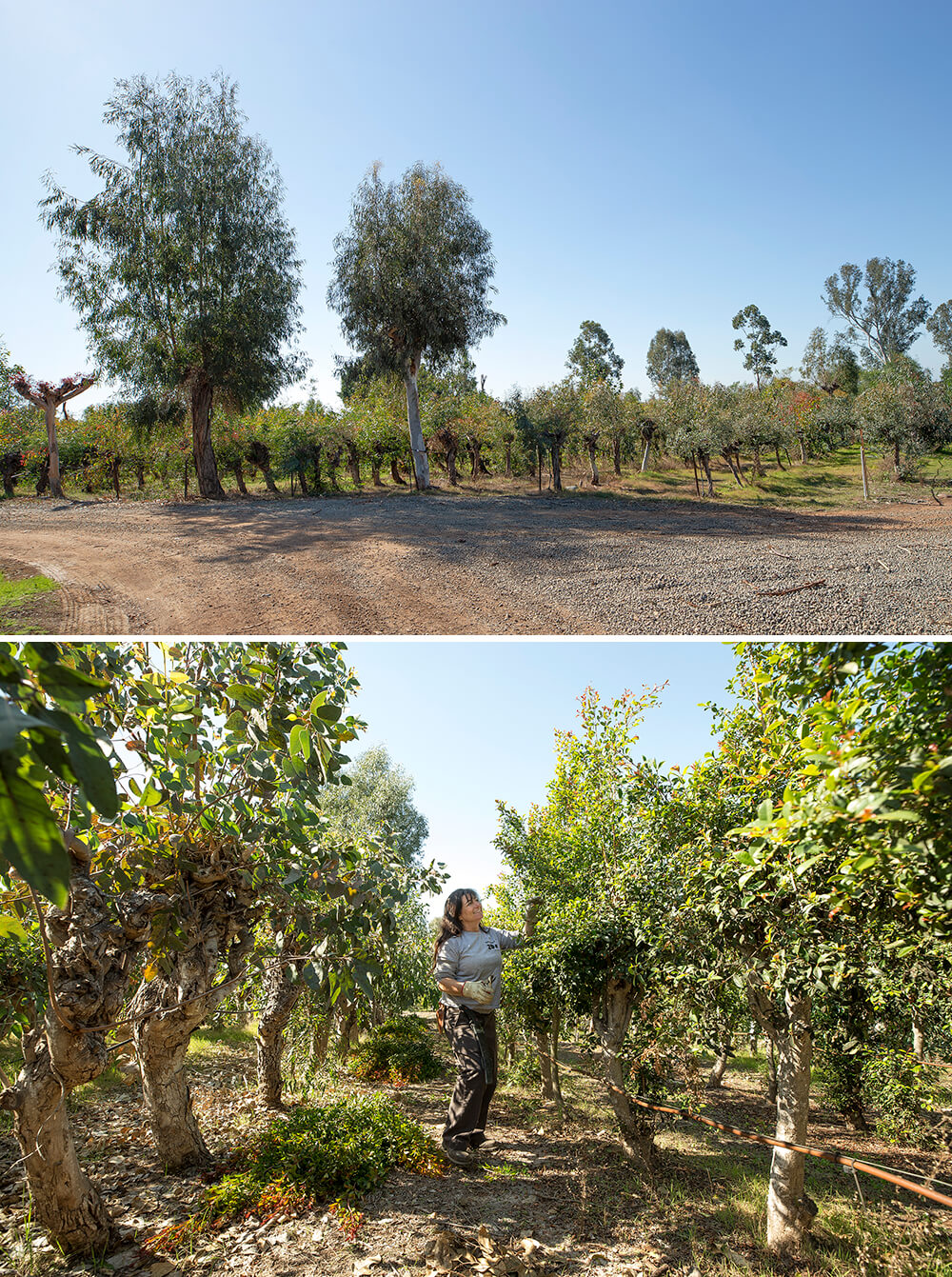
GUM FARM
To feed koalas, the San Diego Zoo grows 35 varieties of eucalyptus on our 10-acre browse farm. When higher parts of a tree are cut, buds beneath the bark develop into new shoots, which allows us to keep the trees low and bushy.
Eucalypt leaves produce aromatic, volatile oils—so described because they evaporate at medium temperatures—that are an important ingredient in many pharmaceutical products, cosmetics, soaps, and even some industrial products. Forests of gum trees can actually appear hazy due to oil vapor—the bluish haze of eucalyptus oil gave the Blue Mountains west of Sydney their name. Australian soldiers returning home by ship from World Wars I and II said they could smell the welcome fragrance even before they could see land on the horizon.
Eucalypt nectar is prized too, by honeybees and beekeepers. Honey takes on different flavors depending on the bees’ food source. Some types of honey are marketed under the name of the main gum species frequented by the bees. In fact, eucalypt nectar is also food for other insects, birds, bats, and Australia’s tiny honey possum.
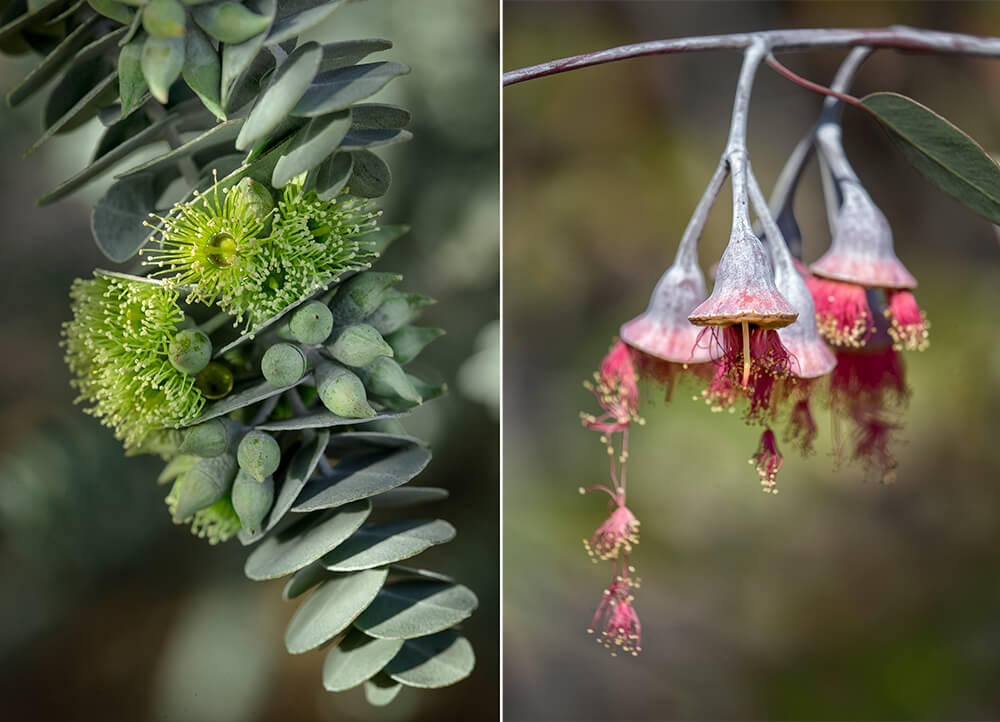
UNCAPPED
(Left) A close look at a eucalypt shows that buds form in odd-numbered clusters. In 99 percent of species, there are no flower petals; they are modified into a little cap that covers and protects the developing bud. As a bud starts to open, it pushes the cap off. (Right) Without petals, the showy parts of a euc’s puffball-like flower are its numerous, pollen-tipped stamens (male parts), which may be whitish, cream, yellow, pink, or red. Myriad stamens surround a single, central carpel (the female part). Stamens mature, and pollen disperses, before a flower’s carpels mature, preventing self-pollination.
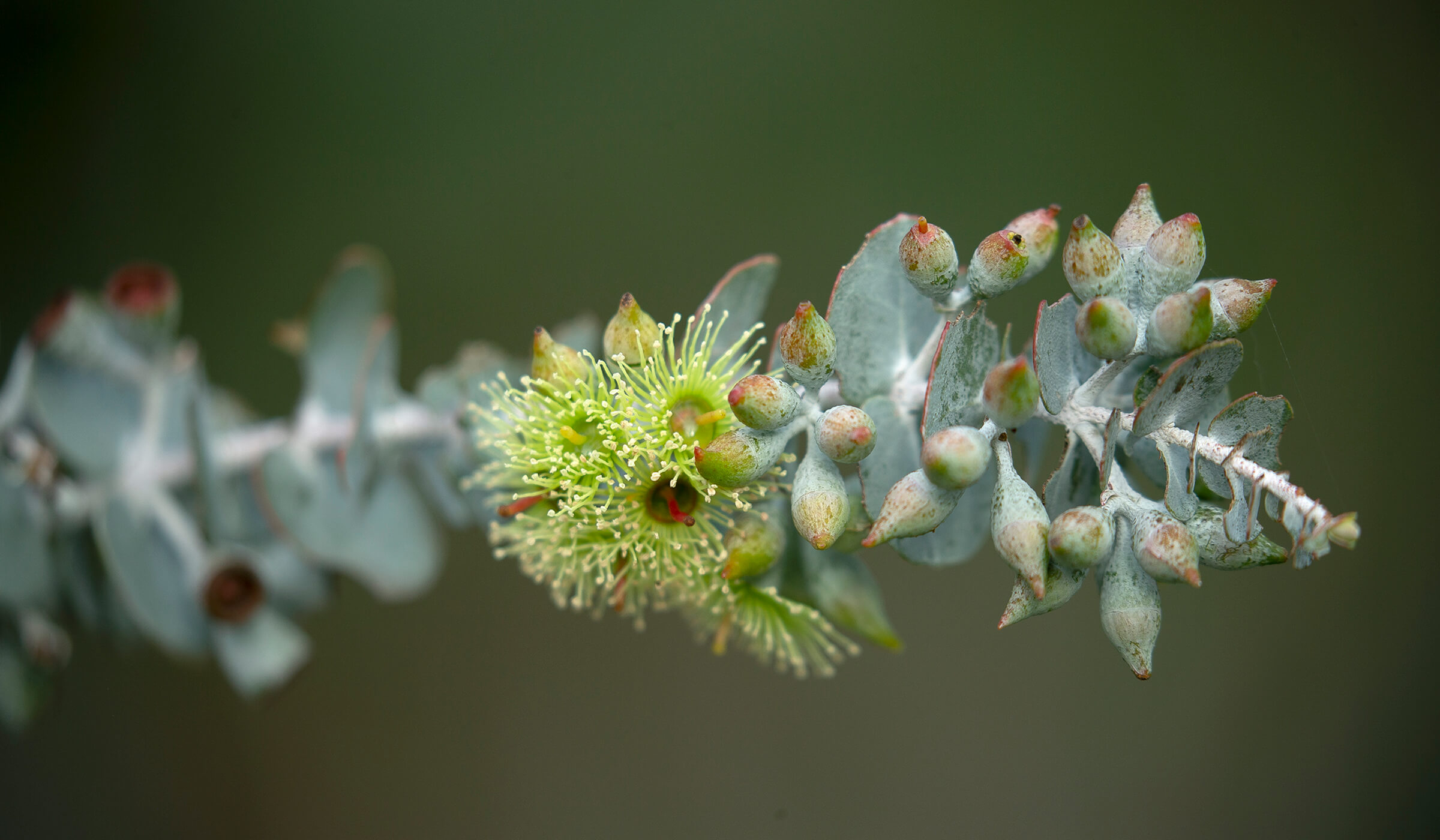
INCENDIARY NATURE
The recent, devastating fires in Australia highlight the incendiary role of gum trees. The oils and toxins in euc leaf litter make it slow to decompose, so it accumulates under trees. In many species, long strands of bark hang from the trunk and limbs. All this adds up to flash fuel for bushfires sparked by lightning. And if you’re a gum tree, that’s not necessarily a bad thing. While the oils and heavy litter promote hot, intense fires that destroy their more fire-vulnerable neighbors, gums usually survive—and recover quickly. Dormant buds beneath the bark of the trunk develop into new shoots when higher parts of the tree are scorched. Even trees burned to the ground can survive, shooting out regrowth at the soil level, from trees that appear to be completely destroyed.
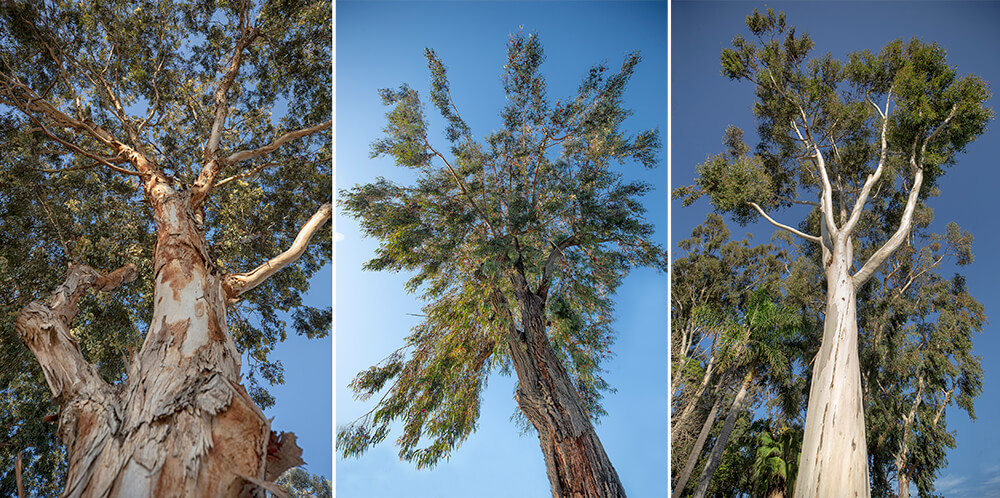
FIRE FUEL
Depending on the species, a eucalypt’s dead outer bark may peel off, or it may stay on the tree. Trees with dead bark that clings to the trunk and branches are referred to as “rough-barked” trees. In about half of eucalypt species—referred to as “smooth-barked” trees—the dead outer layer of bark completely sheds, exposing a new layer of smooth, living bark. Shed bark accumulates under the trees.
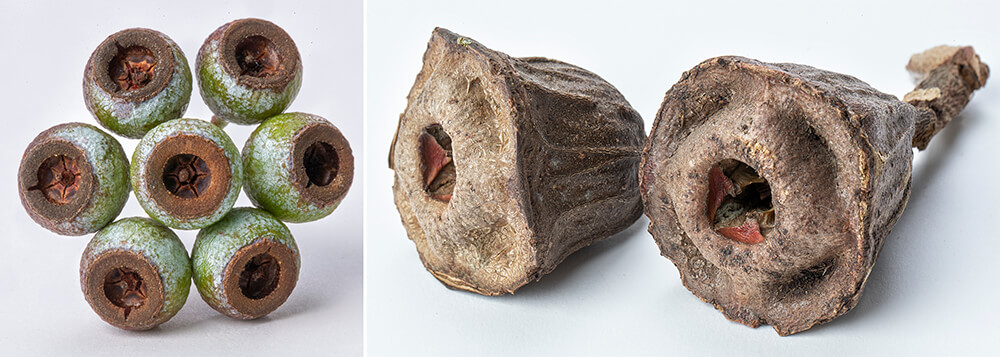
AW, GUMNUTS!
A eucalypt flower eventually forms a hard, woody seedpod called a gumnut. Gumnuts may stay on a tree for 12 months or more—sometimes for years. In some gum trees, seeds stay safe in their seedpods until they’re released by fire and distributed by the accompanying winds.
Their adaptations for surviving fire have allowed eucalypts to dominate in Australia, where they are important in fire ecology. Long before European settlers arrived, aboriginal peoples of Australia selectively burned the landscape—to flush animals from the bush, replenish grazing grounds, and clear forest passageways between hunting grounds. Controlled burning is still one of the tools that land managers sometimes use to reduce fuel buildup and decrease the likelihood of serious, hotter fires, which may spread to residential areas and endanger lives and property. With our climate now changing more rapidly than ever before, we see intensifying wildfires, and managing eucalypt forests includes making difficult decisions regarding fire.
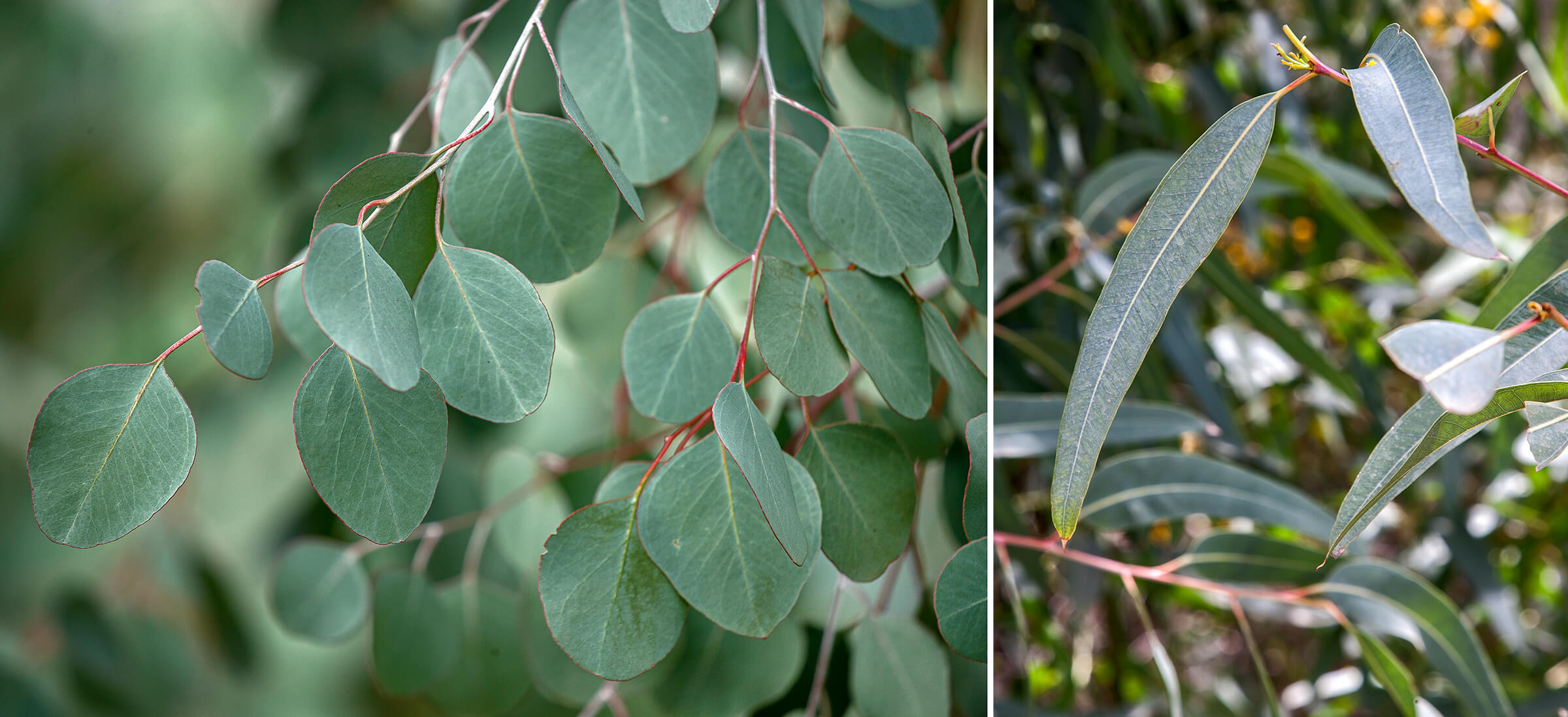
LEAF SHAPES
In most gum trees, a mature tree grows long, narrow, straight or sickle-shaped leaves known as adult leaves. A seedling or a sapling grows only juvenile leaves, which are usually rounded, grayish, and powdery. A tree may grow both juvenile leaves (near the base) and adult leaves (at the crown).
NOT IN MY BACKYARD?
Planted for timber, their oil, or landscaping, eucs have become established in many places outside of their native habitat. In fact, they have replaced some of the native forests in parts of Europe, Africa, the Middle East, Asia, and North and South America. While many people enjoy the shade and the scent of gum trees, others view them as invasive weeds that should be removed.
In California, we love our native oaks, willows, firs, pines, sycamores, and cypresses. Planting trees that are native to your region is preferable, and not—unless you live in Australia—eucs. Yet the stands of gum trees that dot the world do provide some undeniable benefits. They store billions of tons of carbon and grow quickly; they are relatively disease-resistant; and many species grow in marginal soil, where other trees don’t grow. So when you find yourself in the shade of a gum tree, there’s no need to feel too guilty about taking a deep, aromatic breath.

